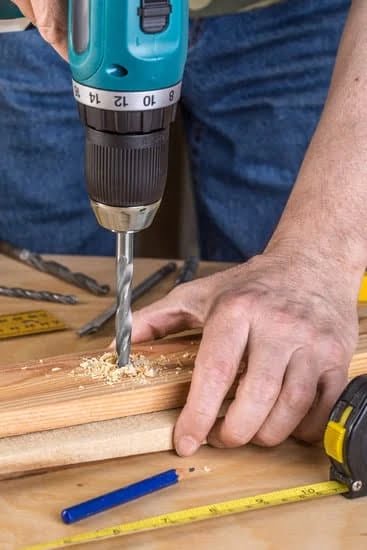Woodworking is a timeless craft that has been practiced for centuries. Whether you are a professional woodworker or someone who enjoys woodworking as a hobby, understanding the different tools involved in this craft is crucial. But what exactly is a woodworking tool called? In this article, we will explore the vast world of woodworking tools, their names, and why it is essential to know them.
Woodworking tools play a vital role in any woodworking project. They are the means through which woodworkers shape, carve, join, and transform raw materials into beautiful and functional pieces of art. From basic hand tools to advanced power tools, each tool has its purpose and function in bringing wood to life.
Knowing the names of woodworking tools is essential for several reasons. First and foremost, it allows woodworkers to communicate effectively with each other. Imagine trying to explain to someone how to use a specific tool without knowing its name. Learning the names of woodworking tools also helps beginners navigate the overwhelming array of options available on the market, enabling them to make informed decisions when purchasing tools for their projects.
In addition to effective communication and decision-making, knowing the names of woodworking tools enhances craftsmanship. Understanding the purpose and function of each tool empowers woodworkers to choose the right tool for each task, resulting in better precision and quality in their work. Furthermore, being familiar with different types of tools opens up possibilities for creativity and experimentation in woodworking projects.
Whether you are just starting your journey in woodworking or have years of experience under your belt, delving into the world of woodworking tools will undoubtedly enhance your craftmanship. In the following sections, we will define what exactly woodworking tools are and discuss various categories of these tools – from basic hand-held ones to advanced power tools – helping you expand your knowledge and skillset in this fascinating craft.
So let us dive in and discover what lies behind those intriguing wooden masterpieces we admire.
Defining Woodworking Tools
Woodworking tools are essential for any woodworking project, as they enable woodworkers to shape, carve, cut, and assemble wood to create beautiful and functional pieces. These tools are specifically designed to work with wood and come in a wide variety of types and sizes to suit different tasks and projects. Understanding what woodworking tools are and their role in woodworking projects is crucial for both beginners and experienced woodworkers.
Woodworking tools can be divided into two main categories: hand tools and power tools. Hand tools are operated manually without the need for electricity or batteries, while power tools rely on electrical power or batteries to function. Both types of tools have their advantages and can be used together or separately depending on the task at hand.
In woodworking, hand tools play a significant role in shaping the wood and adding intricate details. Some common handheld woodworking tools include chisels, saws, planes, hammers, files, rasps, screwdrivers, clamps, and measuring equipment. Each of these tools serves a specific purpose in cutting, shaping, smoothing surfaces or holding pieces together during assembly.
On the other hand, power tools provide efficiency and speed in completing woodworking tasks. They are especially useful when handling larger projects or when repetitive cuts are required. Power woodworking tools include drills/drivers, routers, sanders, table saws, miter saws, jointers/planers, and oscillating multi-tools. These power tools allow woodworkers to perform tasks such as drilling holes accurately at high speeds or cutting through tough materials with ease.
Understanding the range of woodworking tools available is important for choosing the right tool for each task. Woodworkers should familiarize themselves with the names of various woodworking tools as it helps them communicate effectively with other woodworkers or seek advice from experts in the field.
Knowing the names of these tools also allows woodworkers to research tutorials or guides that specifically address their needs. Additionally, being able to identify different woodworking tools helps woodworkers stay safe in the workshop by using the appropriate tool for each task and preventing accidents or damage to their projects.
Basic Woodworking Tools
Woodworking is an intricate craft that requires the use of various tools to shape and manipulate wood into beautiful and functional objects. In this section, we will delve into the basic woodworking tools that every woodworker should be familiar with. These fundamental tools play a crucial role in woodworking projects, allowing craftsmen to shape, join, and finish wood with precision.
The first essential tool in any woodworking arsenal is the hand plane. Hand planes come in various sizes and are used to shave off thin layers of wood, creating smooth and level surfaces. They are particularly useful for flattening boards, smoothing rough stock, and shaping edges. A good quality hand plane can be a true workhorse in a woodshop.
Another indispensable tool is the crosscut saw. This saw features teeth with a sharp bevel that cut through the wood grain cleanly without tearing or splintering it. It is used for making accurate straight cuts across the grain of the wood, such as cutting boards to length or trimming joints.
In addition to hand planes and crosscut saws, no woodworking toolbox is complete without chisels. Chisels are versatile tools that come in different shapes and sizes for various tasks such as shaping mortises (rectangular slots), paring away waste material from joints or carvings, and creating clean recesses for hinges or door locks. A well-sharpened chisel can make all the difference in achieving precise and crisp cuts.
These are just a few examples of basic woodworking tools that every artisan should have at their disposal. As you embark on your journey in woodworking, it is crucial to invest in high-quality tools that will stand up to years of use while providing accuracy and reliability. By mastering these fundamental tools and understanding their functions, you lay a solid foundation for exploring more advanced techniques and tool usage down the road.
Overall, having a sound understanding of basic woodworking tools not only allows you to execute your projects effectively but also improves your craftsmanship. With these indispensable tools in hand, you can begin to craft intricate joinery, shape delicate curves, and create awe-inspiring pieces of woodwork.
Handheld Woodworking Tools
Handheld woodworking tools are essential for any woodworker, as they allow for precise and detailed work on various woodworking projects. These tools are designed to be held and operated by hand, providing greater control and maneuverability compared to larger power tools. In this section, we will explore the different types of handheld woodworking tools, including chisels, saws, planes, and their specific purposes in woodworking.
Chisels are versatile handheld tools that come in various shapes and sizes. They are primarily used for carving, shaping, and cutting wood. The sharp edge of the chisel allows woodworkers to remove small pieces of wood or create intricate designs with precision. Chisels can be used for a variety of tasks such as carving out joints, creating mortises, or even adding decorative details to furniture pieces.
Saws are another essential handheld tool in woodworking. There are different types of saws used for various purposes. A handsaw is commonly used for making straight cuts in wood while a coping saw is suitable for making curved cuts or intricate patterns. A backsaw with a stiffened spine is ideal for making accurate crosscuts and miter cuts. Additionally, a fret saw is often used for more delicate work like cutting intricate designs in thin material.
Planes are handheld tools that are used to shape and smooth wooden surfaces by removing thin shavings of wood. They consist of a flat base with an adjustable blade positioned on top. When properly set up and sharpened, planes can create perfectly flat surfaces or shape complex profiles on the woodwork. Block planes, smoothing planes, and jack planes are some common types of planes used by woodworkers.
These handheld tools require skill and practice to master but provide great results when used correctly. Their versatility makes them indispensable for various woodworking projects such as furniture building, cabinetry, carpentry repairs, and more.
Handheld Woodworking Tools: Detailing the various handheld tools such as chisels, saws, planes, and their specific purposes.
| Woodworking Tool | Specific Purpose |
|---|---|
| Chisels | Carving, shaping, cutting wood |
| Saws | Making straight cuts (handsaw), making curved cuts or intricate patterns (coping saw), making accurate crosscuts and miter cuts (backsaw), cutting intricate designs in thin material (fret saw) |
| Planes | Shaping and smoothing wooden surfaces by removing thin shavings of wood to create flat surfaces or shape complex profiles on the woodwork. |
Power Woodworking Tools
When it comes to woodworking, power tools can be a game-changer. These innovative tools not only make the process faster and more efficient but also provide greater precision and versatility compared to their manual counterparts. Power tools are specifically designed to tackle heavy-duty tasks in woodworking projects, allowing craftsmen to achieve professional-grade results with ease.
One essential power tool in woodworking is the drill. A power drill is a versatile tool that can be used for various tasks such as drilling holes, driving screws or bolts, and even sanding. With different attachments and bits available, a power drill offers flexibility and efficiency in completing different woodworking projects. Whether it’s installing hardware or creating intricate designs, a drill is indispensable for any woodworker.
Another powerful tool in the world of woodworking is the router. Routers are used to hollow out an area in the face of a workpiece or create decorative edges on wooden surfaces. The versatility offered by routers allows woodworkers to create intricate designs and patterns effortlessly. With adjustable speed settings and different bits available, routers give craftsmen full control over their creations while ensuring precise cuts and smooth finishes.
Table saws are yet another must-have power tool for any serious woodworker. Table saws come in various sizes and configurations but generally consist of a circular blade mounted on an arbor driven by an electric motor.
These saws are incredibly versatile and can handle numerous tasks such as ripping boards, cross-cutting panels, or making complex angles with ease. With advanced safety features and accurate cutting capabilities, table saws enable woodworkers to tackle large-scale projects efficiently while ensuring high-quality results.
| Power Tool | Description | Benefits |
|---|---|---|
| Drill | A versatile tool used for drilling holes, driving screws, and sanding. | – Offers flexibility in completing different woodworking tasks.
|
| Router | A tool used to hollow out areas in workpieces or create decorative edges on wooden surfaces. | – Provides versatility in creating intricate designs and patterns.
|
| Table Saw | A saw consisting of a circular blade mounted on an arbor driven by an electric motor. | – Handles various tasks such as ripping boards, cross-cutting panels, and angled cuts.
|
Specialized Woodworking Tools
In addition to the basic hand tools and power tools used in woodworking, there is a range of specialized tools that cater to specific needs and techniques. These tools are designed to make certain tasks easier, more precise, or even possible. One such specialized tool is the biscuit joiner.
Also known as a plate joiner, this tool is used to create strong joints by cutting slots into pieces of wood and then inserting small wooden biscuits coated with adhesive into the slots before clamping the pieces together. Biscuit joiners are particularly useful for joining boards at angles or for aligning edges during panel glue-ups.
Another valuable specialized tool in woodworking is the dovetail jig. Dovetails are widely recognized as one of the strongest types of joints due to their interlocking design. Traditionally crafted by hand, dovetails can now be created efficiently and accurately using a dovetail jig. A dovetail jig guides a router or chisel to cut precise tails and pins that fit tightly together, forming sturdy joints for drawers, boxes, furniture construction, and other applications.
A spindle sander is yet another important specialized tool used in woodworking projects that require intricate detail work and smooth curves. This unique tool consists of a rotating drum covered with sandpaper sleeves of varying grits. It allows woodworkers to sand concave or convex surfaces by guiding their workpieces against the spinning drum. Spindle sanders are especially beneficial for creating smooth transitions between curves or making slight adjustments on shaped surfaces without altering the overall shape.
These specialized woodworking tools contribute greatly to the artistry and precision achievable in woodworking projects. By investing in these tools and mastering their usage, woodworkers can elevate their craftsmanship to new heights while expanding their capabilities in creating complex designs and flawless joinery.
Traditional vs. Modern Woodworking Tools
Introduction to Traditional and Modern Woodworking Tools
Woodworking has a long history that dates back centuries, with craftsmen utilizing traditional hand tools to create intricate and beautiful wooden pieces. However, with advancements in technology, modern power tools have become increasingly popular among woodworkers. This section will explore the key differences between traditional hand tools and modern power tools, weighing the pros and cons of each and determining whether one is inherently superior to the other.
Pros and Cons of Traditional Hand Tools
Traditional hand tools have been the cornerstone of woodworking for thousands of years due to their simplicity, versatility, and craftsmanship. These tools are often made from high-quality materials like steel or hardened alloys, providing durability that can last generations. Hand tools also offer precise control over the woodworking process, allowing artisans to make minute adjustments as needed. Additionally, hand tools require minimal maintenance compared to their powered counterparts.
However, one drawback of using traditional hand tools is the physical effort required. Using manual saws or chisels can be labor-intensive and time-consuming compared to their power tool equivalents. Additionally, mastering these hand tools requires skillful technique and practice, which may deter beginners who are just starting in woodworking.
Advantages and Disadvantages of Modern Power Tools
In recent years, modern power tools have revolutionized the woodworking industry by offering efficiency, speed, and increased productivity. Power tools such as electric drills or table saws significantly reduce manual labor while delivering consistent results every time. These machines are designed for precision cutting or shaping on a larger scale that would be challenging or impossible with traditional hand tools alone.
Despite its benefits, there are notable downsides to relying solely on modern power tools for woodworking. First, power tools tend to be expensive, making them less accessible for individuals on a budget or those who are just starting out. These tools also require regular maintenance and upkeep, including blade sharpening and motor lubrication, to ensure optimal performance and longevity. Power tools can also be noisy and potentially hazardous if not used properly or with caution.
Final Thoughts on Traditional vs. Modern Woodworking Tools
In the debate between traditional hand tools and modern power tools for woodworking, there is no definitive answer as to which is superior. Each type offers its unique advantages and disadvantages, and the choice ultimately depends on individual preferences, project requirements, skill level, and budget constraints. Some woodworkers may opt for a combination of both types of tools, utilizing traditional hand tools for detail work and power tools for larger-scale projects.
Woodworking should be viewed as a craft that embraces versatility in tool selection rather than pitting one against the other. Understanding the capabilities, limitations, and applications of both traditional hand tools and modern power tools empowers woodworkers to make informed decisions based on craftsmanship goals, personal preferences, and available resources. By embracing both traditional and modern woodworking practices, artisans can truly unlock their creative potential in this ancient yet evolving craft.
Must-Have Woodworking Tools for Beginners
Essential Hand Tools
For beginners in woodworking, it is important to start with a few basic hand tools that are versatile and essential for various woodworking projects. The first tool every beginner should have is a high-quality set of chisels. Chisels are used for shaping and smoothing wood, creating joints, and removing excess material. A set with different sizes will allow for greater versatility and precision.
Another must-have tool is a good quality saw. A handsaw or a backsaw is perfect for cutting wood to size, while a coping saw is ideal for intricate cuts and curves. Beginners should also consider investing in a block plane, which can help refine the surfaces of their wooden creations and remove rough edges.
Power Tools for Efficiency
While hand tools are essential in woodworking, power tools can greatly enhance efficiency and productivity. One power tool that beginners should consider is a drill. There are various types of drills available, but a cordless drill with multiple speed settings will provide the necessary versatility.
A random orbital sander is another useful power tool that helps in achieving smooth finishes on wood surfaces. It eliminates the need for manual sanding and reduces time and effort significantly.
Lastly, a jigsaw or circular saw can be beneficial when making straight or curved cuts in wood. These power tools enable beginners to quickly cut through wood with precision.
Tips on Selecting Reliable Brands and Budget-Friendly Options
When choosing woodworking tools as a beginner, it’s important to strike a balance between quality and cost-effectiveness. One way to ensure reliability is by researching reputable brands known for producing durable tools that withstand prolonged use.
It’s also worth considering purchasing second-hand tools from reliable sources such as specialized trade-in programs or online marketplaces dedicated to used woodworking equipment. These options often provide affordable alternatives without compromising on quality.
Additionally, it’s advisable to read reviews and seek recommendations from experienced woodworkers. They can provide valuable insights on budget-friendly options that meet the requirements of beginners.
By investing in these essential tools, beginners can lay a solid foundation for their woodworking journey. With practice and experience, they can gradually expand their tool collection to tackle more complex projects.
Importance of Knowing Woodworking Tool Names
Knowing the names of various woodworking tools is essential for woodworkers of all levels. It not only allows them to effectively communicate and collaborate with others in the woodworking community but also enhances their overall craftsmanship. Understanding the names of different tools helps woodworkers accurately identify and select the right tool for a specific task, ensuring optimal results.
One significant benefit of knowing woodworking tool names is improved efficiency in the workshop. When woodworkers can quickly recall the name of a specific tool, they can easily locate and retrieve it from their toolbox or storage area.
This saves valuable time that would otherwise be spent searching for the right tool, allowing woodworkers to focus more on their actual projects. Additionally, being familiar with tool names enables woodworkers to efficiently communicate their needs when seeking advice or assistance from fellow woodworkers or professionals.
Moreover, knowing woodworking tool names promotes safety in the workshop. Woodworking involves handling sharp and powerful tools, and using them correctly is crucial to prevent accidents and injuries. By understanding the names of different tools, woodworkers can follow proper safety protocols and use each tool as intended. They are less likely to confuse one tool with another and are more aware of potential hazards associated with each specific tool.
Overall, knowing woodworking tool names significantly contributes to the quality of craftsmanship in woodworking projects. Precise terminology allows for clear communication when discussing techniques or seeking guidance from others. It also facilitates efficient usage of tools by enabling woodworkers to select the appropriate instrument for a particular task quickly.
Furthermore, knowing how to correctly handle each tool increases safety in the workshop, reducing the risk of accidents. Therefore, aspiring woodworkers should prioritize learning and familiarizing themselves with woodworking tool names as an integral part of mastering their craftmanship skills.
Conclusion
In conclusion, understanding and knowing the names of woodworking tools is vital for anyone interested in pursuing woodworking as a hobby or profession. Throughout this article, we have explored the different types of woodworking tools, from basic handheld tools to specialized power tools. We have learned about their functions and specific purposes, as well as the benefits and drawbacks of traditional hand tools versus modern power tools.
Woodworking tools play a crucial role in bringing creative ideas to life. They enable woodworkers to shape and manipulate wood into beautiful and functional pieces of art. By knowing the names of these tools, woodworkers can accurately communicate their needs, collaborate with others in the woodworking community, and expand their skills by researching specific techniques associated with each tool.
For beginners just starting out in woodworking, it is essential to curate a collection of must-have tools. Investing in reliable brands that offer quality products will ensure longevity and accuracy in your work. There are also budget-friendly options available for those who may be on a tight budget. By possessing these essential tools and continuously learning about their applications through practice and research, beginners can gradually enhance their craftsmanship.
Frequently Asked Questions
What are considered woodworking tools?
Woodworking tools refer to a broad range of instruments specifically designed for various woodworking tasks. These tools can include both hand tools and power tools, each with its unique purpose in shaping and manipulating wood. Some commonly recognized woodworking hand tools are handsaws, chisels, planes, carving knives, mallets, marking gauges, and rulers.
Power tools commonly utilized by woodworkers include table saws, routers, drills, sanders, jointers, planers, and bandsaws. Additionally, specialized woodworking accessories like clamps, rasps files and sharpening systems are also considered essential components of a woodworker’s toolkit.
What is a wood shaping tool called?
A wood shaping tool is commonly referred to as a “lathe.” The lathe is a versatile machine that enables craftsmen to rotate a piece of wood against cutting or shaping instruments while holding it securely in place with the help of a chuck or faceplate.
This rotational motion allows for the creation of symmetrical shapes such as bowls or spindles by removing material from the rotating workpiece with gouges, skew chisels or scrapers. Lathes come in different sizes and configurations depending on the scale of work one intends to undertake.
What do woodworkers use?
Woodworkers rely upon an assortment of materials and equipment to carry out their craft effectively. Beyond their array of woodworking tools mentioned earlier, they also utilize other essentials such as safety gear like goggles, ear protectors, respirators or masks (for dust protection), and protective gloves to ensure their well-being while working with potentially hazardous tools or materials.
Additionally, woodworkers employ measuring and layout instruments like squares, calipers/tape measures/rulers which assist them in taking accurate measurements and marking layouts on their projects. Workbenches equipped with vises provide a stable platform for performing various operations while storage solutions such as shelves/bin systems help keep tools organized for easy access during projects.

Hi everyone! I’m a woodworker and blogger, and this is my woodworking blog. In my blog, I share tips and tricks for woodworkers of all skill levels, as well as project ideas that you can try yourself.





